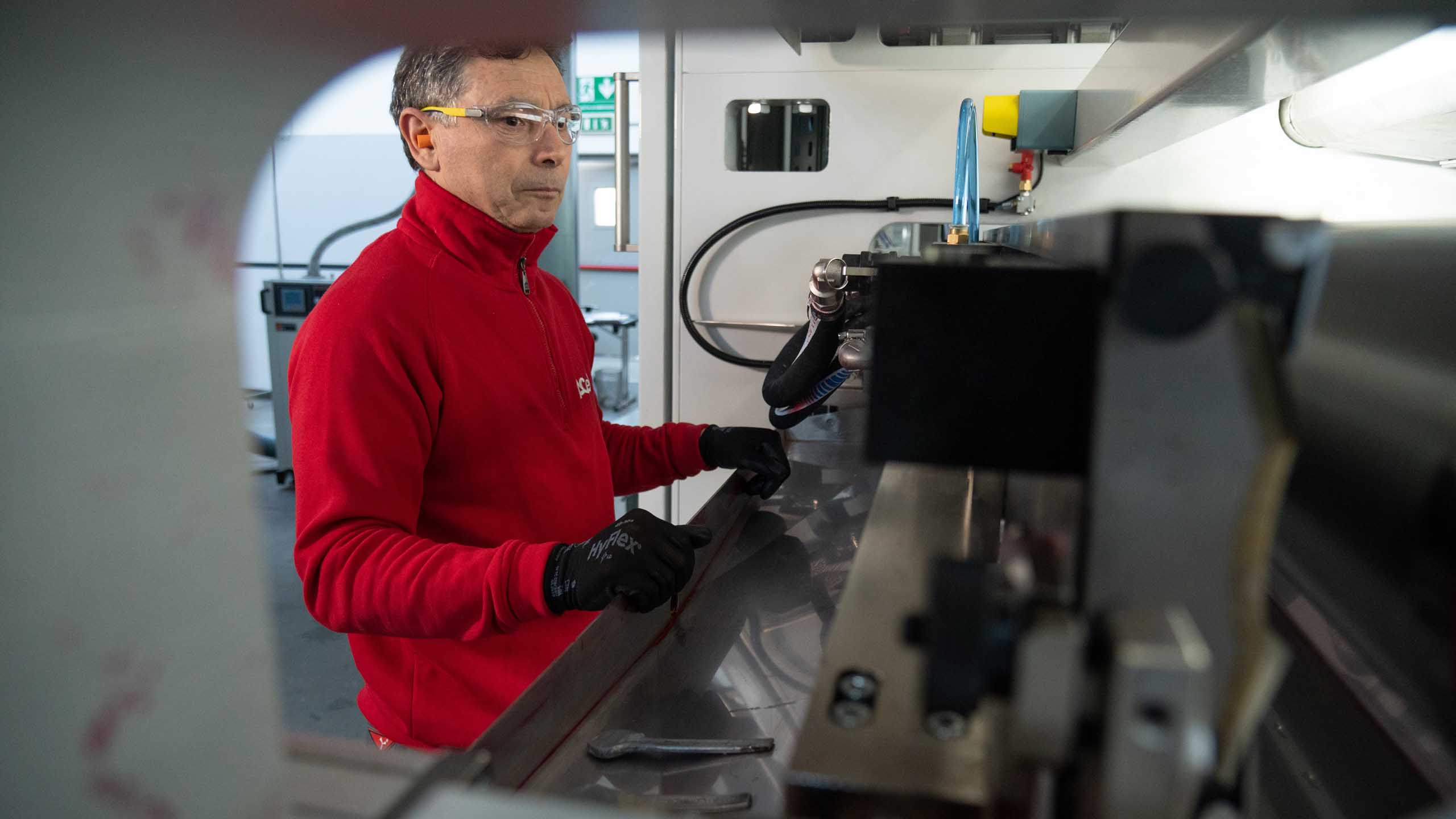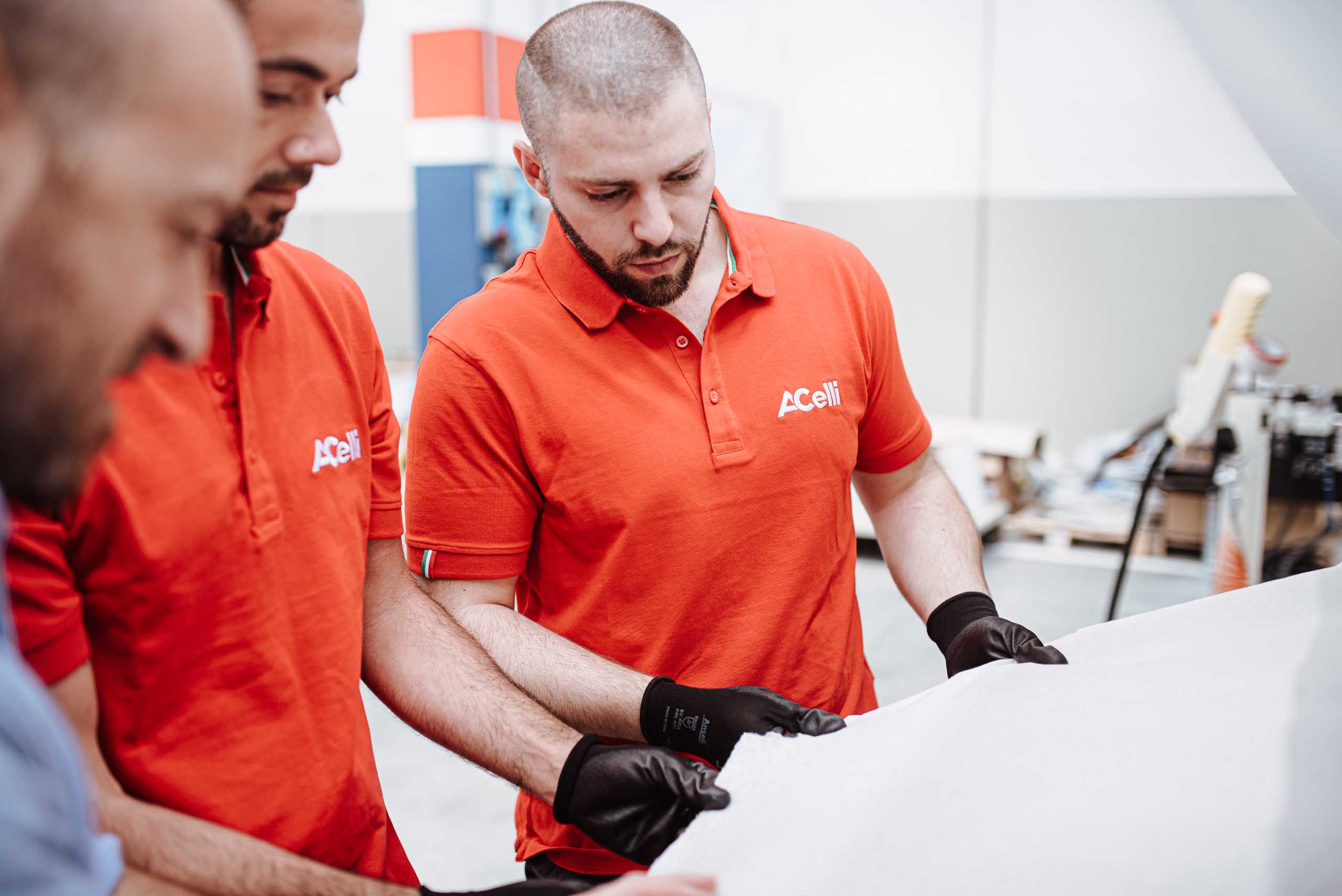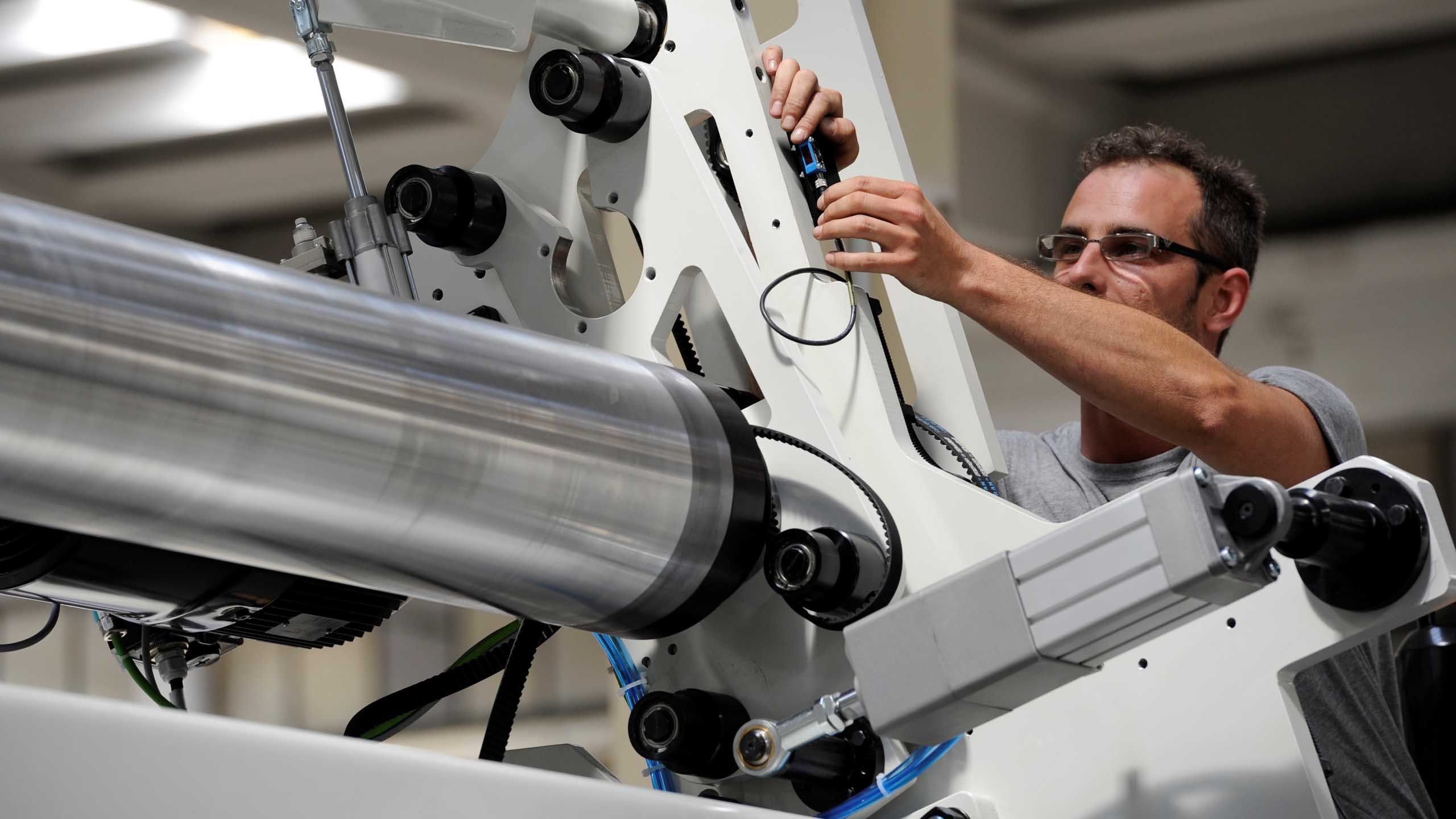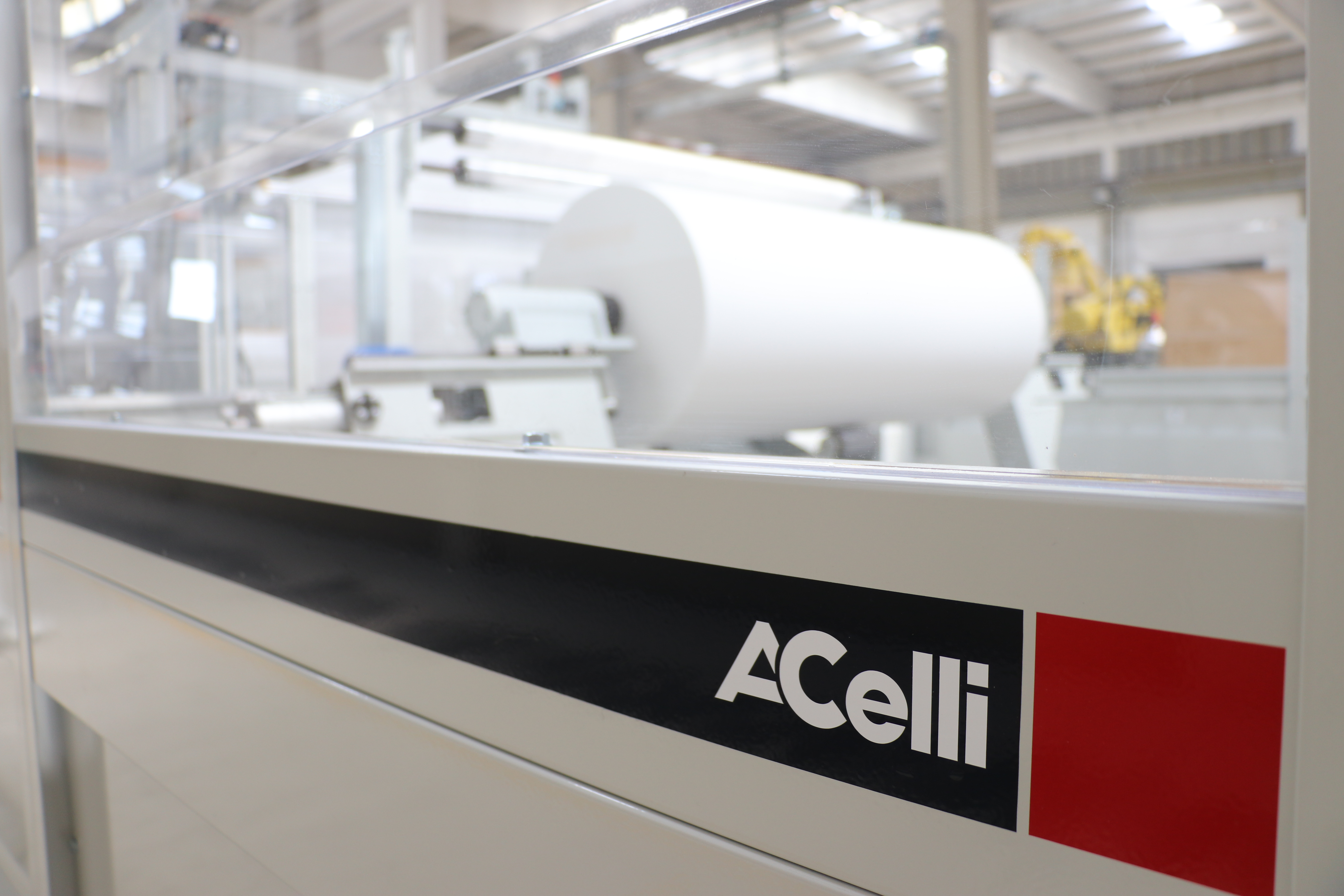
The Company
Topics
Contacts

updates and retrofits
Retrofitting is a buzz word that is circulating in the manufacturing industry since the early 21st century and for good reason. Many tissue and nonwovens producers have been in the business for decades, so it is common for them to have existing systems with years of operating life, systems that required a substantial initial investment and are still in good working order. Yet, the average age of this equipment and machinery is 20 years, which means, for example, that it predates new technologies like the Internet of Things (IoT) and Industry 4.0.
With the boom of technology over the past 10 years, particularly the growth of Industry 4.0 technology, modern solutions are now equipped with sensors, cameras and computer systems and they are connected to the cloud. This technology gives tissue and nonwovens manufacturers the capability to increase the speed and efficiency of production while significantly improving the quality of the final product and reducing costs. Without the upgrades to bring their machinery and equipment up to today’s technological standards, companies can easily fall behind their competition.
In addition, outdated machinery lacks the up-to-date safety features needed to protect workers during operations. The effectiveness and efficiency of these assets, when compared to the latest technologies, can be lacking. These are some of the reasons why you should consider an industrial plant retrofitting and upgrading your existing equipment.

Retrofitting is a broad term that can apply to any physical structure or object, such as buildings, bridges, mobile phones, elevators, photocopiers and, in our case, industrial machinery.
To retrofit something implies the replacement of existing parts or the addition of new parts to improve the features of the machine or device, such as its performance or the safety of workers.
When it comes to the tissue and nonwovens industry, these activities are performed to:
Read more: Benefits of industrial automation in Tissue, Paper and Nonwovens

In today’s world the manufacturing industry, as with all other industries, is expected to do more with less. For manufacturers, including tissue and nonwovens ones, this means an increase in the quality of their products, a more efficient and faster production and a decrease in costs. At the same time, manufacturers are required to minimize their impact on the environment, thus operating in a sustainable way.
With this in mind, let’s take a look at the areas of the plant where retrofitting can help tissue and nonwovens manufacturers:
Safety is of the utmost importance in any plant, particularly where there is moving machinery. In tissue and nonwovens plants there are moving belts, unwinders, winders, slitters and more, and every piece of these machineries poses a potential threat to workers’ safety. Machinery from even 20 years ago does not necessarily have updated safety systems.
Fortunately, retrofitting tissue and nonwovens machinery on the production line to include updated safety features that will bring machinery up to current standards is possible. This can be done by adding any or all of the following safety features to existing equipment:
Thanks to these, you will minimize the risk of accidental injury for your workers and improve your safety record. You will also bring your plant up to safety standards based on government regulations.
Quality control (QC) of tissue and nonwovens products has becoming increasingly necessary for producers in order for them to meet the demands of their customers. Customers expect defect-free products, a difficult goal to achieve using legacy machinery. Retrofits can improve the quality of the product in two ways.
First, new software functions make it possible to conduct better winding of the product thanks to the possibility of automatically adjusting the speed and tension during the winding process. Second, the mechanical upgrades of the winder itself would place less stress on the product during the winding process, reducing the likelihood that the product would be damaged, wrinkled or otherwise inferior.
The goal of manufacturers is to produce the highest quality products in the shortest amount of time possible. In other words, efficiency has to be at its maximum. To obtain this, we must achieve a balance between speed and quality: If the speed of the production line is too high, we risk obtaining a defective product, but if it’s too low, productivity will be affected.
When it comes to machine settings, the key is to find the sweet spot that will allow you to determine the maximum speed at which the machines can operate without compromising the quality of the raw materials or final product.
The answer to achieving maximum operational efficiency is automation. Thanks to sensors installed on the machines, you can increase the speed of operations right up to the point at which the first defects are detected, allowing you to easily find the maximum speed at which you can operate without affecting the quality of the final product.
Best of all, you can determine these settings for various materials and save those settings for future operation. That way, you will know precisely what settings to use, depending on what materials you are working with at any given time.
Energy efficiency follows from operational efficiency. When you know the precise settings that will optimize operations, you will be able to minimize energy usage. You will also reduce production waste because you will have little to no product damage.
At the same time, simply by retrofitting your existing machinery and equipment, you are acting in a sustainable manner. You can:
Read more: Green retrofit for eco-friendly Tissue, Paper and Nonwovens factories

In order to implement a full retrofit of your plant the right way, you need to plan ahead and implement this activity in a way that will bring the most benefit to your company. This means doing the following:

A.Celli is a trusted partner for tissue and nonwovens companies. It is our mission to increase productivity, efficiency and safety of our customers.
A.Celli can count on a department dedicated to industrial plant retrofitting made up of senior mechanical and automation engineers. This allows us to modify obsolete equipment both from an automation design point of view and from a mechanical one.
Our experts are available for technical consultations, equipment inspections and software and equipment updates, which can result in:
Plus, in addition to being able to provide retrofits to their own machinery, A.Celli can do the same with machinery made by other manufacturers.
These are some examples of what A.Celli can do to update or retrofit your existing machines and systems:
For more information about A.Celli’s updates and retrofits, please contact us today and book a consultation with our experts!